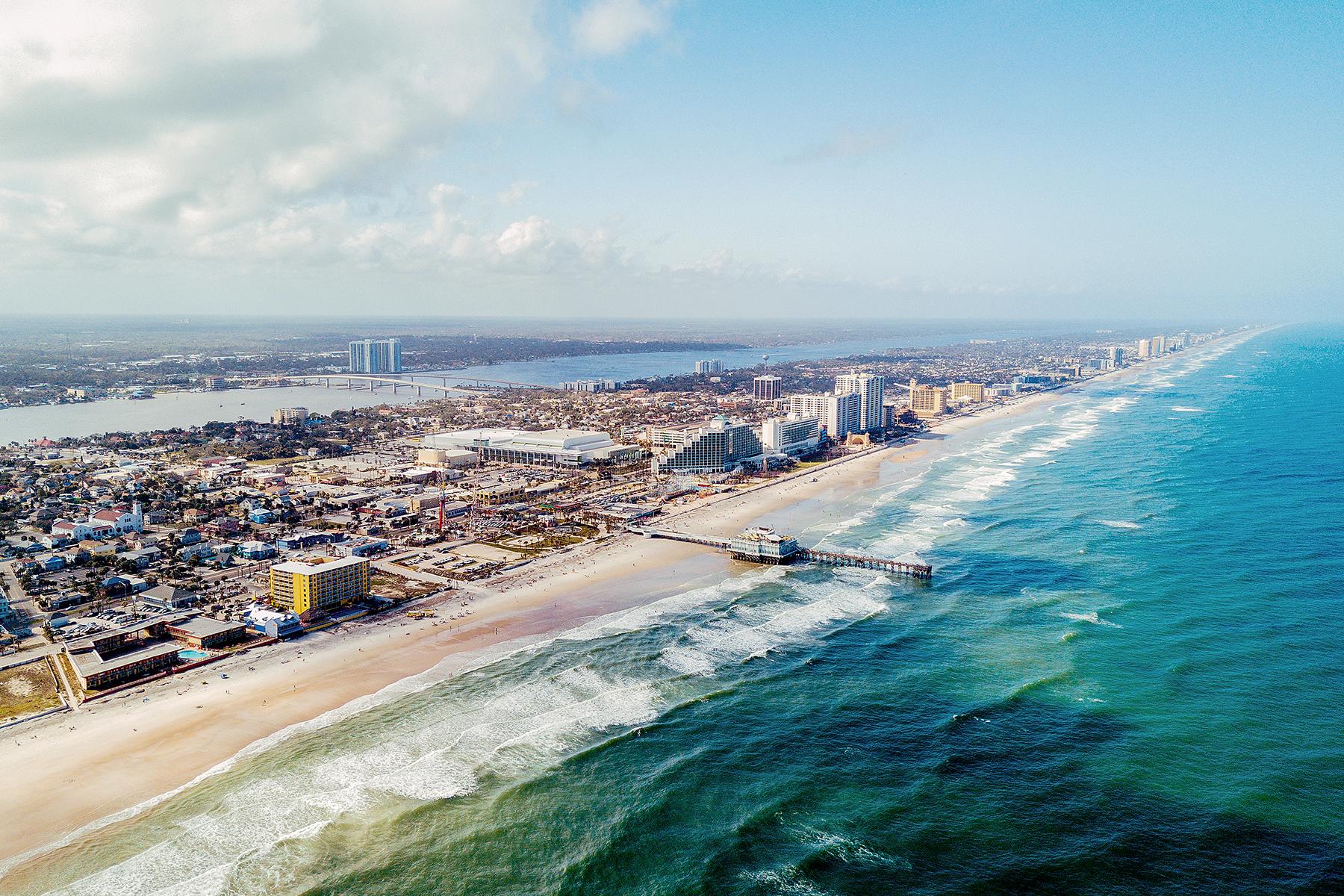Florida is beautiful, and big, and unpredictable. Here's how to deal.
If you drove from the Western stretch of Florida’s Panhandle to the state’s southern tip in Key West, you’d have traveled more than 800 miles. It’s no wonder the state varies so widely in climate, geography, and demography. Here’s what you need to know before you go—from planning your trip to protecting yourself from the state’s many extremes.
Top Picks for You
Florida Could Be Several States
This massive peninsula’s many distinct regions include the Southeast, Southwest, The Keys, Central, Northeast, and the Panhandle—and all have different vibes. Generally, the northern and central regions are more conservative than the coastal communities and the land more akin to Southern Georgia, while the Southeast is by far the most diverse and progressive and the terrain more tropical. Understanding these nuances can help you choose the right destination for your interests and lifestyle.
Hurricane Season Spans Half the Year
Florida’s annual hurricane season spans from June 1 to November 30. Storms can form within a matter of days, sometimes dissipating or rapidly morphing into monsters. However, big storms are much more likely in August and September. Chances are, you’ll be just fine if you travel to Florida in June or July, though it’s always a good idea to buy travel insurance in case something does happen. If you’re visiting Florida when a storm approaches, fly out as soon as possible or make plans to drive away from the storm’s projected path regardless of whether you’re in an evacuation zone.
Recommended Fodor’s Video
Winter Is the Busiest and Most Expensive Season
Rates from December to April are high across the board since most try to escape their own winters, avoid the risk of a hurricane, and plan around school breaks. Winter is also the time to visit the Everglades, as temperatures, mosquito activity, and water levels are all lower (making wildlife easier to spot). Northern Florida, conversely, receives the greatest influx of visitors from Memorial Day to Labor Day.
Be Prepared for Humidity and Summer Rain
Florida is rightly called the Sunshine State—areas like Tampa Bay report 361 days of sunshine a year! But it could also be dubbed the Humid State. From June through September, 90% humidity levels aren’t uncommon, nor are accompanying thunderstorms. In fact, more than half of the state’s rain falls during these months.
There’s a New Sunscreen Ban
Even on overcast days, ultraviolet rays shine through the haze, so pack a sunscreen with an SPF of at least 15 SPF. Just make sure to pack a sunscreen without oxybenzone or octinoxate, two ingredients known to cause damage to coral reefs. Starting in 2021, they’ll be banned in Key West to protect the Great Florida Reef.
Protect Yourself From Mosquitoes
Mosquitos are most active in the wet summer months but are present year-round due to the state’s climate. Even if the bugs aren’t infected by diseases like West Nile or Zika (there was an outbreak in Miami in 2016), humans and pets are still susceptible to their itchy bites. Pack a repellent or lemon eucalyptus oil to ward off the pests, and wear long sleeves, pants, and socks when spending time in nature. Also, avoid the outdoors at dawn and dusk. If you’re traveling with pets, note that dogs and cats can contract heartworm disease from mosquitoes if they’re not on preventive medication.
Renting a Car Is Essential
Even Florida’s urban hubs are sprawling, so a car is the preferred method of transportation. Ride sharing services like Uber and Lyft also operate in most areas. While a new express train service (formerly Brightline, now called Virgin Trains USA) transports passengers from Miami to Fort Lauderdale to West Palm Beach and has grand plans to expand to Orlando and Tampa in the future, public transit unfortunately isn’t an efficient mode in most of the state.
Respect the Wildlife
Much of Florida’s wildlife is protected or endangered due to overpopulation and development. While there are plenty of opportunities to commune with nature during your adventures (Everglades National Park to the west of Miami, for example, comprises 1.5 million acres of tropical and subtropical wetlands with one of the world’s most diverse ecosystems), they should always come in the form of watching and appreciating from afar.
Plan Ahead for a Theme Park Trip to Orlando
Before embarking on a theme park extravaganza, make sure your trip is long enough to fit in all desired attractions and parks (Magic Kingdom alone features six lands and 40 attractions!) Next, select a hotel as close as possible to the park you’re visiting. Purchase park tickets in advance so you can look for discounts and consider upgrading to fast passes that reduce wait times. Packing the most comfortable shoes you own will go a long way. Food inside the parks can be expensive, so read up on the food policy before you go. Some allow you to bring snacks, and refillable water bottles are usually allowed. Once you’re inside the park, use free mobile apps such as the My Disney Experience, which provide navigation tools, purchasing capabilities, and tips for making your visit stress-free.
When Choosing a Beach, Consider the Atlantic Ocean Versus Gulf of Mexico
Not sure which beach to pick? Consider what best fits your lifestyle, since Florida’s coasts offer radically different experiences. East coast (Atlantic) beaches can be narrow and crowded or wide and empty depending on the location while West Coast (Gulf) beaches are sprawling, peaceful respites. East coast beaches can be havens for parties; Gulf beaches are usually sleepier and more casual. East coast beaches tend to have oceanfront hotels and high rises that are just steps from the water; on the Gulf side, developments and other buildings are set back from the shoreline. East coast beaches can be inundated with seaweed for lengthy periods; Gulf beaches can at times be overwhelmed by toxic Red Tide.
Check Beach Conditions for Red Tide
A harmful algae bloom that discolors the water and causes eye and respiratory irritations in humans, Red Tide isn’t new to Florida, but scientists believe nutrient runoff from agricultural activities and the release of Lake Okeechobee’s dirty water into the Gulf has increased the intensity of the blooms. Check for blooms from August to December, when the beaches and waterways of Southwest Florida struggle with the harmful algae.




